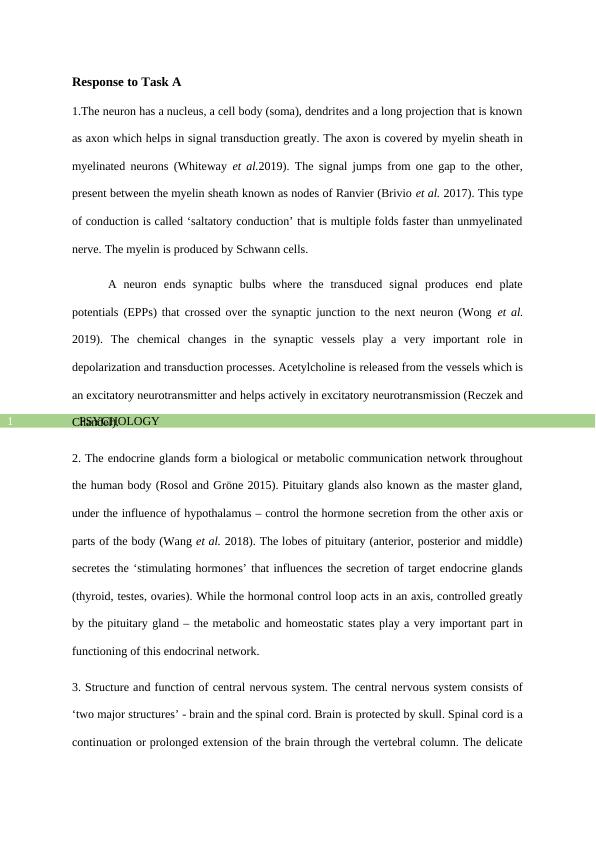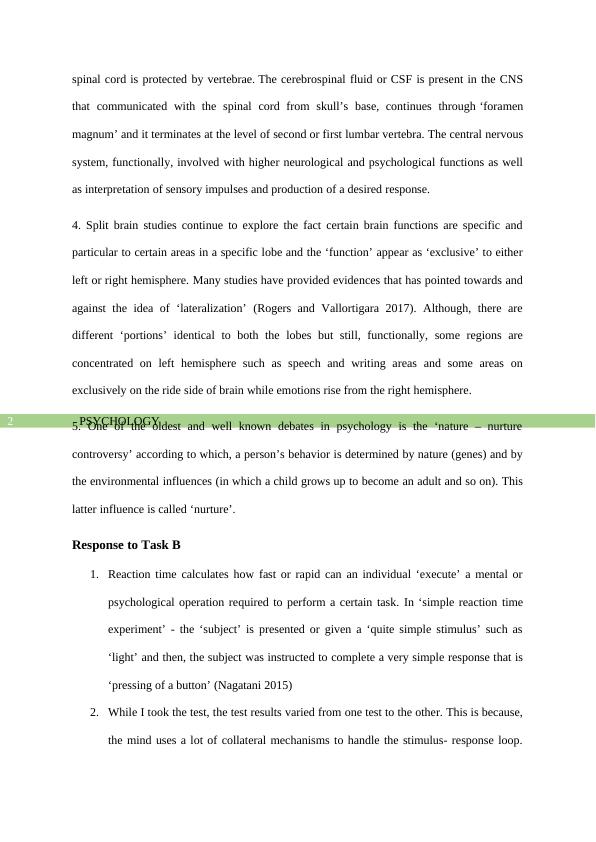Psychology: Neuron, Endocrine Glands, CNS, Reaction Time, Behavioral Psychology
Complete all three tasks in Introduction to Psychology Assignment 2, including a Multiple Choice Test and a Tutorial or online activity with specific questions to be answered. The assignment focuses on the topic of Biological bases of mental life and behaviour.
6 Pages1551 Words87 Views
Added on 2022-10-12
About This Document
This document discusses the neuron, endocrine glands, central nervous system, reaction time, and behavioral psychology. It covers topics such as saltatory conduction, neurotransmitters, pituitary gland, split brain studies, and nature-nurture controversy.
Psychology: Neuron, Endocrine Glands, CNS, Reaction Time, Behavioral Psychology
Complete all three tasks in Introduction to Psychology Assignment 2, including a Multiple Choice Test and a Tutorial or online activity with specific questions to be answered. The assignment focuses on the topic of Biological bases of mental life and behaviour.
Added on 2022-10-12
ShareRelated Documents
End of preview
Want to access all the pages? Upload your documents or become a member.
Biological Communication- Doc
|9
|1958
|116
Key Components of Reflex Arc, Endocrine Glands and Reproductive System
|10
|2015
|125
Human Nervous System and Endocrine System PDF
|11
|2148
|147
(PDF) Nervous and Endocrine Systems
|16
|2618
|133
The most critical system of the body
|10
|2702
|13
Communications Systems Assignment
|8
|1927
|477



